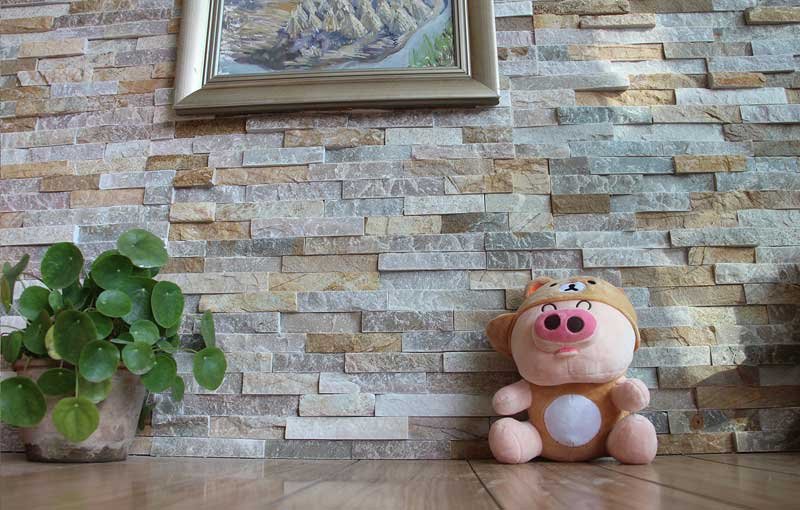Revêtement extérieur en pierre Peut élever l'esthétique de n'importe quel espace, mais il y a des moments où vous voudrez ou avez besoin de le supprimer. Qu'il s'agisse de dommages, de conceptions obsolètes ou d'un projet de rénovation, l'élimination du revêtement en pierre peut être une tâche difficile qui nécessite une préparation minutieuse et des outils appropriés. Voici un guide détaillé étape par étape pour vous aider à éliminer efficacement le revêtement en pierre naturel sans causer de dommages inutiles au mur sous-jacent.
-
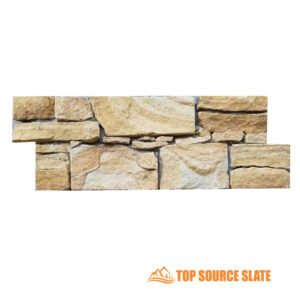 Revêtement mural extérieur en pierre naturelle Z de style nouveau
Revêtement mural extérieur en pierre naturelle Z de style nouveau -
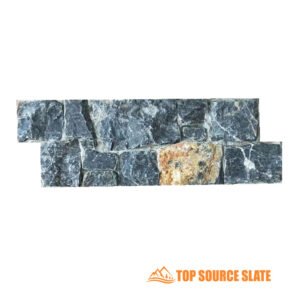 Revêtement extérieur en pierre naturelle Z de style nouveau
Revêtement extérieur en pierre naturelle Z de style nouveau -
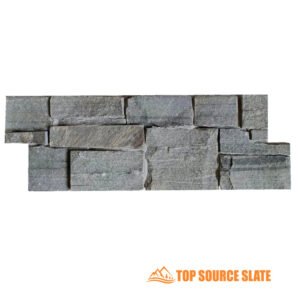 Prix de gros panneaux extérieurs en pierre naturelle
Prix de gros panneaux extérieurs en pierre naturelle -
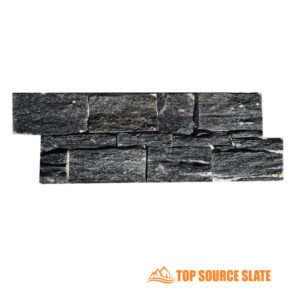 Cheminée en pierres empilées en quartz noir
Cheminée en pierres empilées en quartz noir -
 Revêtement de mur en pierre de panneau de grès z de prix usine
Revêtement de mur en pierre de panneau de grès z de prix usine -
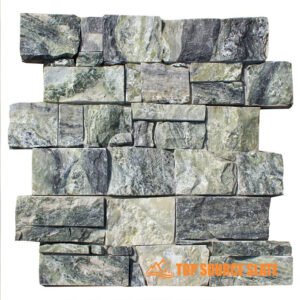 Panneaux de revêtement en pierre Z imbriqués à prix d'usine
Panneaux de revêtement en pierre Z imbriqués à prix d'usine -
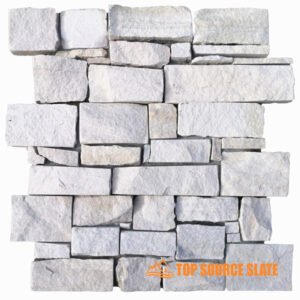 Cheminée en pierre empilée en grès blanc
Cheminée en pierre empilée en grès blanc -
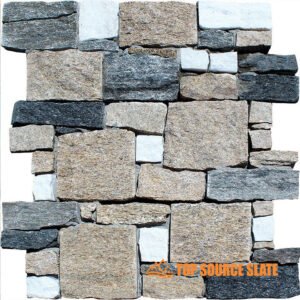 Décoration extérieure en pierre de culture
Décoration extérieure en pierre de culture -
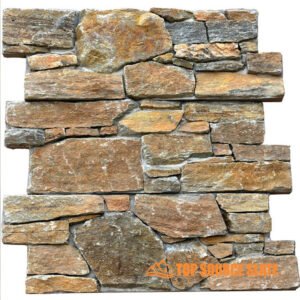 Revêtement mural en pierre de quartz rustique ledgestone tuiles caractéristiques Z
Revêtement mural en pierre de quartz rustique ledgestone tuiles caractéristiques Z -
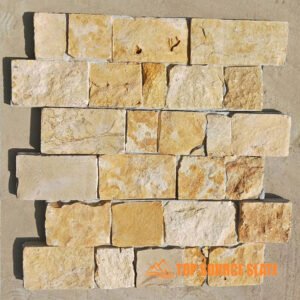 Produits en pierre cultivée de panneau de grand livre d'ardoise de Splitface
Produits en pierre cultivée de panneau de grand livre d'ardoise de Splitface -
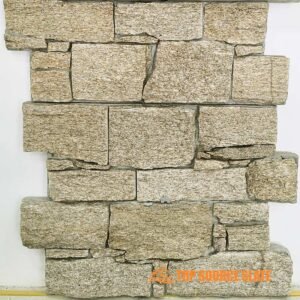 Parement en pierre granit Z
Parement en pierre granit Z -
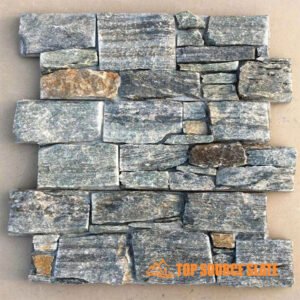 Fournisseur chinois emboîtant des revêtements en pierre empilés de différentes couleurs
Fournisseur chinois emboîtant des revêtements en pierre empilés de différentes couleurs -
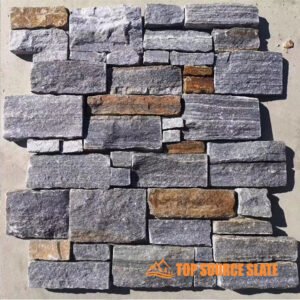 Pierre de pays en pierre de culture en forme de Z en gros en Chine
Pierre de pays en pierre de culture en forme de Z en gros en Chine -
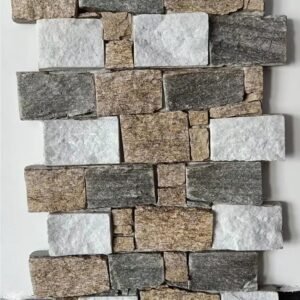 Panneaux en Z de revêtement en pierre à emboîtement populaires en Chine
Panneaux en Z de revêtement en pierre à emboîtement populaires en Chine -
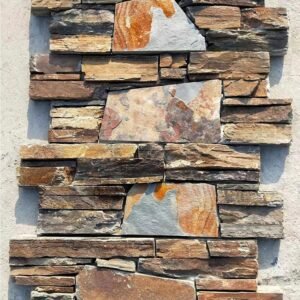 Extérieur en placage de pierre sèche en ardoise rustique
Extérieur en placage de pierre sèche en ardoise rustique -
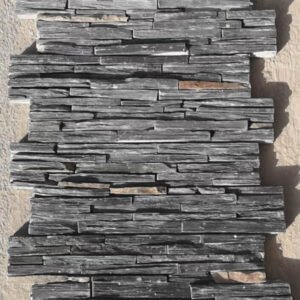 Panneaux de placage de pierre de rebord à dos de ciment d'ardoise noire
Panneaux de placage de pierre de rebord à dos de ciment d'ardoise noire -
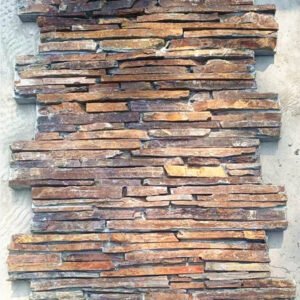 Pierre de rebord naturelle imbriquée avec support en ciment d'ardoise multicolore
Pierre de rebord naturelle imbriquée avec support en ciment d'ardoise multicolore -
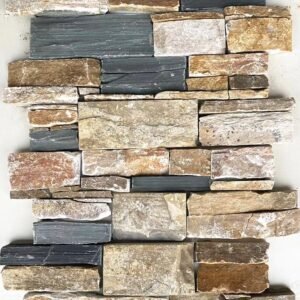 Tuile murale naturelle Ledgestone Stackstone à support en ciment
Tuile murale naturelle Ledgestone Stackstone à support en ciment -
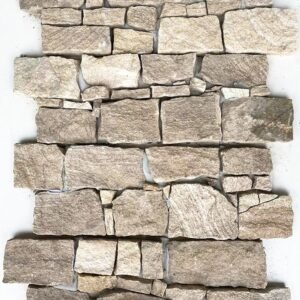 revêtement en pierre empilée de panneau de forme de Z
revêtement en pierre empilée de panneau de forme de Z -
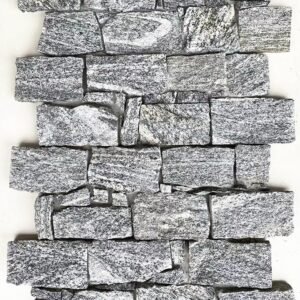 Panneaux de revêtement de mur de caractéristique de ledgestone de vente chaude
Panneaux de revêtement de mur de caractéristique de ledgestone de vente chaude
1. Évaluation du type d'installation
Avant de commencer le processus de suppression, il est crucial de déterminer comment le revêtement en pierre extérieur a été installé. Cette évaluation dictera les outils, le temps et les méthodes requis pour le travail.
Natural Adhéré par mortier Revêtement en pierre
La plupart des revêtements de pierre extérieurs sont installés à l'aide de mortier, qui agit comme un agent de liaison entre la pierre et la surface du mur. Le revêtement en pierre adhéré au mortier peut être trouvé à la fois sur les murs extérieurs et intérieurs. Lorsqu'elle est adhérée directement au mortier, le processus d'élimination peut être à forte intensité de main-d'œuvre car chaque pierre doit être ébréchée individuellement. Le ciselage autour des articulations de la pierre où se trouve le mortier est le moyen le plus efficace de retirer chaque pièce. Les obligations de mortier sont généralement difficiles, alors attendez-vous à appliquer une force importante.
Revêtement en pierre avec fixations mécaniques (installation encadrée)
Dans certains cas, Revêtement de pierre est installé sur un cadre, en bois ou en métal. Ce type de revêtement est généralement fixé avec des vis ou des ongles et peut être retiré en grandes sections. En tapant doucement le revêtement et en écoutant un son creux, vous pouvez déterminer si le revêtement est monté sur un cadre de support. Le revêtement en pierre naturel encadré est généralement plus facile à retirer car l'ensemble du panneau peut souvent être prélevé loin du mur dans des morceaux plus grands, réduisant la main-d'œuvre. Cependant, des soins supplémentaires sont nécessaires pour éviter d'endommager le mur en dessous.
Veneer Stone Vadding
Le revêtement en placage de pierre mince est plus léger et plus facile à enlever que les morceaux de pierre de taille normale. Les placages sont généralement collés comme des carreaux avec une fine couche de mortier ou d'adhésif. Le processus d'enlèvement des placages est similaire à celui des carreaux de céramique, nécessitant un ciseau ou un grattoir pour briser l'adhérence et soulever les pierres. Le retrait du placage est moins laborieux mais nécessite tout de même des précautions pour éviter de creuser le mur.
2. Préparation au travail
Une bonne préparation est essentielle pour réussir le retrait d’un parement extérieur en pierre. Non seulement les bons outils et les bonnes précautions de sécurité faciliteront le travail, mais ils garantiront également que vous ne causerez pas de dommages excessifs au mur sous-jacent.
Équipement de protection
Lors du retrait du revêtement en pierre, la sécurité devrait être votre priorité absolue. Les débris volants, les outils nets et la poussière sont des dangers courants pendant ce processus. Portez ce qui suit:
- Lunettes de sécurité: Protégez vos yeux des puces volantes de mortier et de pierre.
- Gants: Les gants de travail robustes empêchent les coupes des pierres et des outils déchiquetés.
- Masque de poussière: Le retrait du mortier ou de l'adhésif crée beaucoup de poussière, ce qui peut irriter vos poumons.
- Manches longues et bottes de travail: Ceux-ci protégeront votre peau des coupes, des abrasions et des morceaux de pierre lourds.
Outils dont vous aurez besoin
Avoir les bons outils est essentiel pour rendre l'élimination aussi efficace que possible. Certains des outils de base dont vous aurez besoin comprend:
- Marteau et ciseau froid: Ceux-ci sont essentiels pour briser manuellement la pierre et le mortier.
- Barre: Pour éloigner les grands panneaux de pierre du mur, en particulier lorsque vous travaillez avec des installations encadrées.
- Perceuse électrique avec foret à maçonnerie: Si le mortier est particulièrement tenace, percer des trous dans le mortier peut faciliter son cisaillement.
- Meuleuse d'angle: Cet outil électrique permet de couper des joints épais de mortier ou de béton dans un revêtement extérieur en pierre pleine grandeur.
- Brosse métallique: Utilisez-le pour nettoyer les résidus de mortier et de colle après avoir retiré la pierre.
3. Le processus de suppression
Une fois que vous avez évalué le type d’installation et rassemblé les outils et équipements de sécurité appropriés, vous pouvez commencer le processus de retrait.
Étape 1 : Commencez par les bords
Le processus de suppression du revêtement en pierre devrait commencer par se concentrer sur les bords ou les coins de l'installation. Ces zones sont généralement les plus faciles à accéder et à fournir un point de départ naturel pour l'effet de levier. Lorsque vous commencez sur les bords, il réduit le risque d'endommager les grandes sections de la paroi sous-jacente et vous donne un processus de retrait plus contrôlé.
1.1. Insertion des outils
Utilisez un ciseau froid ou une barre de proty pour vous coincer entre le revêtement en pierre naturelle et le mur. Commencez avec de petits robinets légers avec un marteau pour éviter d'endommager la structure du mur en dessous. L'objectif est de créer suffisamment d'espace entre la pierre et le mortier afin que vous puissiez commencer à appliquer un effet de levier pour déloger les pierres. Si le revêtement est adhéré directement au mortier, frappez soigneusement les bords jusqu'à ce que vous puissiez accéder aux joints de mortier.
1.2. Gagner un effet de levier
Une fois que vous avez desserré les pierres de bord, les détournez-les doucement en appliquant une pression cohérente avec la barre de Pry. Soyez prudent, surtout si les pierres sont grandes ou lourdes. Des secousses soudaines pourraient provoquer des fissures ou des copeaux dans la surface sous-jacente, surtout s'il s'agit d'une brique ou d'une cloison sèche. Si vous remarquez que la pierre ne se détache pas facilement, ne le forcez pas - passez à la section suivante et revenez une fois de plus se desserré.
1.3. Éviter les dommages
Travaillez lentement pour éviter de créer des dommages importants au mur. En commençant sur les bords, vous évitez également d'affaiblir les sections plus grandes’ L'intégrité structurelle, qui pourrait s'effondrer ou se casser si elle n'est pas manipulée soigneusement.
Étape 2: desserrer le mortier
Une fois que les bords du revêtement en pierre extérieur ont été retirés, le prochain défi consiste à desserrer le mortier. Le mortier agit comme l'adhésif principal pour le revêtement en pierre, et son retrait nécessite une approche systématique patiente.
2.1. Éliper le mortier
Utilisez un marteau et un ciseau pour éliminer soigneusement le mortier entourant le revêtement en pierre naturelle. Il est préférable de incomber votre ciselier dans les joints de mortier entre les pierres plutôt que directement sous eux. Cela réduit le risque d'endommager la paroi tout en décomposant efficacement le mortier. Le mortier peut être incroyablement fort, donc l'application d'une pression régulière est importante. Les coups de lumière répétés sont plus efficaces et plus sûrs que les frappes dures qui pourraient craquer ou endommager le mur derrière le revêtement de placage en pierre.
2.2. Forage pour mortier tenace
Pour des couches de mortier plus résistantes et plus épaisses, vous devrez peut-être utiliser une perceuse électrique avec un foret à maçonnerie. Percer des trous dans le mortier affaiblit son adhérence, ce qui le rend plus facile à ciseler. Ceci est particulièrement utile pour les mortiers plus anciens qui ont eu le temps de durcir de manière significative. Cependant, il est conseillé d'être prudent lors de l'utilisation d'outils électriques autour de surfaces délicates ou de cloisons sèches, car un perçage excessif peut causer des dommages.
2.3. Vérification des progrès
Lorsque vous travaillez à travers le mortier, vérifiez périodiquement la facilité avec laquelle la pierre se relâche. Si le ciel de placage en pierre ne bouge pas après avoir retiré le mortier autour de lui, il peut toujours être lié dans d'autres zones. Déplacez systématiquement d'une pierre à l'autre, en vous assurant de retirer tout le mortier sans se précipiter, car cela pourrait laisser des parties du revêtement coincées.
Bardage en pierre naturelle : Le guide complet
Les avantages et les inconvénients du revêtement extérieur en pierre moderne
Top 10 des grossistes de revêtements en pierre naturelle au Royaume-Uni
8 facteurs pour choisir un grossiste de revêtement mural en pierre naturelle
Étape 3: Utilisez un moulin à angle pour le mortier dur
Dans les cas où le mortier est particulièrement têtu ou épais, un ciseau à main peut ne pas être suffisant. Un moulin à angle équipé d'une lame de diamant peut être un outil inestimable pour couper le mortier sans endommager le mur.
3.1. Choisir le bon outil
Une meuleuse d'angle avec une lame diamantée ou de maçonnerie est conçue pour couper des matériaux adhésifs résistants comme le mortier. Avant de l'utiliser, assurez-vous d'avoir un équipement de sécurité approprié : des lunettes, des gants et un masque anti-poussière. Les meuleuses d'angle produisent de la poussière et de petits débris, il est donc essentiel de travailler dans un espace bien ventilé.
3.2. Couper les joints de mortier
Passez le broyeur d'angle le long des joints de mortier entre le revêtement de paroi en pierre extérieure. Le but est de couper suffisamment profondément dans le mortier pour affaiblir sa prise sur la pierre sans couper dans le mur en dessous. Commencez à une basse vitesse et augmentez progressivement la pression si nécessaire. L'action de coupe du broyeur d'angle créera une rupture propre entre les pierres et le mur, ce qui les rend plus faciles à retirer avec une barre ou un marteau.
3.3. Manipulation de mortier épais ou solide
Si le mortier est particulièrement épais, envisagez de couper la pierre et le mortier dans un “X” modèle. Cela aide à diviser la pierre en sections plus petites et plus gérables. Une fois que le mortier a été coupé, vous pouvez utiliser un burin ou une barre de préchauffage pour finir de retirer la pierre de revêtement extérieur en morceaux. N'oubliez pas qu'un broyeur d'angle est puissant, alors évitez d'utiliser trop de force car cela pourrait risquer d'endommager le mur.
Étape 4: Retirez les grands panneaux en sections (pour le revêtement encadré)
Pour les installations encadrées, où les idées de revêtement en pierre extérieure sont fixées à un cadre en bois ou en métal, le processus peut être beaucoup plus rapide car les grandes sections peuvent être retirées en une seule fois.
4.1. Identification des installations encadrées
Les installations de revêtement en pierre à ossature sont montées sur une structure de support, généralement en bois ou en métal, qui maintient les panneaux de revêtement en place. Taper sur le mur peut aider à identifier les sections encadrées, car elles sembleront creuses par rapport à un revêtement collé au mortier. Une fois localisés, concentrez-vous sur le retrait des panneaux du cadre plutôt que sur des pierres individuelles.
4.2. Retirer les grands panneaux
Insérez un levier ou un grand ciseau entre le panneau et le cadre. Appliquez une pression constante et constante pour séparer le panneau du support. Dans certains cas, les vis ou les clous devront être retirés avant de pouvoir retirer le panneau. Soyez prudent lorsque vous retirez de grandes sections, car elles peuvent être lourdes et se déplacer brusquement lorsqu'elles sont libérées du cadre.
4.3. Gérer des sections plus lourdes
Si le revêtement est particulièrement lourd, demandez une assistance pour aider à abaisser les panneaux une fois qu'ils ont été libérés du cadre. La chute ou la mauvaise géniture de grandes sections peut endommager les zones environnantes ou poser un risque de sécurité.
4.4. Nettoyage
Une fois les panneaux retirés, il y aura probablement des débris des vis, des clous ou de l'adhésif qui maintiendront le cadre en place. Cela devrait être éliminé à l'aide d'une brosse métallique ou d'un outil similaire, laissant une surface propre pour les travaux futurs.
4. Faire des dommages causés par le mur
Après avoir retiré le revêtement en pierre, il est important d'inspecter le mur pour tout dommage. Le revêtement en pierre extérieur, en particulier les installations adhérentes au mortier, peut laisser la surface sous inégal ou piqûre de trous.
Réparation des dommages causés par le mur
- Trous de patch et fissures: Utilisez un composé de correction de haute qualité pour remplir tous les trous laissés par le mortier. Des fissures ou des gouges plus grandes peuvent nécessiter un remplissage plus substantiel. Appliquez le composé uniformément avec une truelle, puis poncez-le pour une finition lisse une fois séché.
- Renforcement de la surface du mur: Si le mur sous-jacent a subi des dommages importants, envisagez de le renforcer avec un agent de liaison ou un plâtre supplémentaire avant d'appliquer une nouvelle finition de surface.
Nettoyage du mortier résiduel et de l'adhésif
Après avoir retiré les panneaux de revêtement mural en pierre, il est probable que des résidus de mortier ou de colle restent collés au mur. Une brosse métallique rigide ou une laveuse à pression peut être utilisée pour éliminer ces restes, laissant une surface propre prête pour les réparations ou les nouvelles installations.
5. Considérations particulières
Placage vs pierres pleine grandeur
Il y a une différence entre les placages de pierre minces et le revêtement en pierre des murs extérieurs pleine grandeur. Les placages sont plus légers et plus faciles à enlever, car ils adhèrent généralement comme du carrelage. Cependant, les pierres de taille réelle nécessitent plus de force et de soin, car elles sont plus lourdes et font souvent partie intégrante de la structure du mur.
Quand faire appel à des professionnels
Si vous n’êtes pas sûr du processus de suppression ou si vous gérez une zone étendue, il peut être préférable de demander l’aide d’un professionnel. Des entrepreneurs spécialisés peuvent retirer le revêtement rapidement et efficacement, minimisant ainsi les dommages potentiels à votre propriété.
6. FAQ
1. Quel outil est utilisé pour retirer le revêtement en pierre ?
Pour retirer un revêtement en pierre, vous aurez généralement besoin d'un ciseau, marteau, et un levier de maçonnerie. Pour les zones plus grandes, vous pouvez utiliser un perceuse électrique avec accessoire burin ou un marteau-piqueur pour aider à desserrer le matériau. Équipement de protection, comme des gants et des lunettes, est essentiel pendant ce processus.
2. Quelle est la manière la plus simple d’enlever un placage en pierre ?
La façon la plus simple d’enlever un placage en pierre est de suivre ces étapes :
- Marquez les lignes de coulis Autour du placage en pierre avec un moulin ou un couteau utilitaire.
- Utilisez un ciselier et marteau pour desserrer le placage sur ses bords.
- Enlever en faisant levier Le placage soigneusement avec un bar de maçonnerie.
- Pour de grandes sections ou des zones tenaces, utilisez un ciseau électrique pour accélérer le processus.
3. Quelle est la différence entre le revêtement en pierre et le placage en pierre?
- Revêtement en pierre: Fait référence à des pièces en pierre mince, naturelle ou artificielle appliquée à la surface de l'extérieur ou de l'intérieur d'un bâtiment à des fins décoratives. Il agit comme une couche protectrice et esthétique.
- Placage en pierre: Fait référence à des morceaux de pierre plus fins, souvent artificiels, qui imitent l'apparence de la pierre naturelle. Il est utilisé de manière similaire au revêtement en pierre mais est généralement plus léger et plus facile à installer.
4. Comment le revêtement en pierre est-il attaché?
Le revêtement en pierre est attaché en utilisant adhésif basé sur le ciment ou mortier. Il peut être appliqué directement sur une surface préparée, comme le béton ou sur un latte en métal ou ciment sur les structures encadrées. Dans certains cas, des ancres ou des clips mécaniques sont utilisés pour un support supplémentaire, en particulier sur les surfaces extérieures.
7. Conclusion
Enlèvement revêtement extérieur en pierre est un processus à forte intensité de main-d'œuvre qui nécessite une planification minutieuse et des outils appropriés. Que votre revêtement soit adhéré au mortier ou installé sur un cadre, la clé du succès réside dans la patience et la précision. Bien que les petits projets de bricolage soient gérables, des emplois plus grands ou plus complexes peuvent nécessiter une assistance professionnelle. En suivant ces étapes, vous pouvez éliminer efficacement le revêtement en pierre et préparer vos murs pour la prochaine étape de votre rénovation.
Si vous cherchez fabricants et fournisseurs de pierres empilées, nous vous recommandons de vérifier nos produits.
- Médaillons Mosaïque dix10 produits
- Dalle de pavage fou 1414 produits
- Pierre lâche aléatoire 1818 produits
- Pierre à pile sèche 2424 produits
- Pierre empilée cascade 1717 produits
- Pierre empilée en marbre dix10 produits
- Carreaux muraux à face éclatée 1515 produits
- Revêtement mural Ledgestone 2828 produits
- Pierre empilée 3737 produits
Nous avons plus de 18 ans d'expérience en exportation et proposons des échantillons avant le placement de la commande.
Si vous avez besoin de plus d'aide ou si vous souhaitez discuter de quelque chose de personnalisé, veuillezContactez-nous à tout moment.
Et serions ravis de partager notre expertise pour vous aider aussi !

